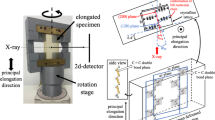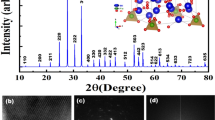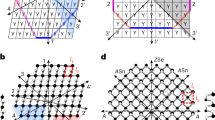Abstract
A SMALL rectangular crystal flake of behenolic acid, CH3(CH2)7C:C(CH2)11COOH, was mounted on an X-ray spectrometer in such a way that the long edge of the flake was parallel to the spectrometer axis. It was anticipated that this long edge should be parallel to the b axis of the crystal, in analogy to the previously investigated stearolic acid.1 The revolving crystal photograph obtained with this setting was, indeed, almost identical with the corresponding photograph of stearolic acid. It gave, within the limits of experimental error, the same value for the b axis. One difference, however, was the extreme faintness of the long spacing. A second exposure obtained with a random setting gave an entirely unexpected picture. Most of the reflected spots on this second photograph were drawn out into arcs of circles. The picture was very similar to certain powder photographs which show orientation effects, b showed that the sample, in spite of its transparency, its smooth surface, and its straight edges, is not a single crystal. The first photograph leads to the conclusion that the small crystal elements from which the flake is built up cannot be orientated completely at random. The only possible orientation of these elements which is compatible with the observations is the following: All the elements have their b axes in common. The degree of freedom which is required to explain the powder effect consists in a rotation round the b axis (Fig. 1).
This is a preview of subscription content, access via your institution
Access options
Subscribe to this journal
Receive 51 print issues and online access
$199.00 per year
only $3.90 per issue
Buy this article
- Purchase on SpringerLink
- Instant access to full article PDF
Prices may be subject to local taxes which are calculated during checkout
Similar content being viewed by others
Author information
Authors and Affiliations
Rights and permissions
About this article
Cite this article
MÜLLER, A. On Imperfect Crystallisation in certain Long Chain Compounds. Nature 117, 721 (1926). https://doi.org/10.1038/117721a0
Issue date:
DOI: https://doi.org/10.1038/117721a0



